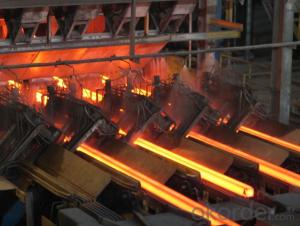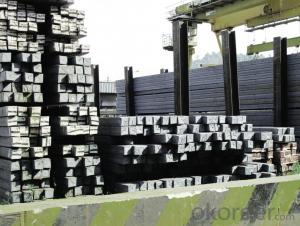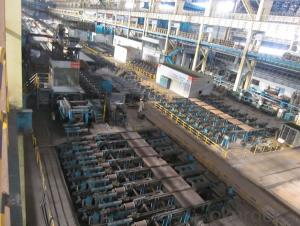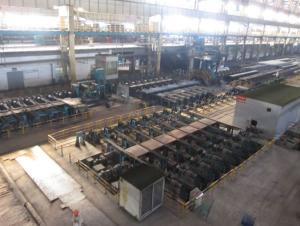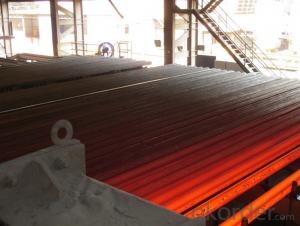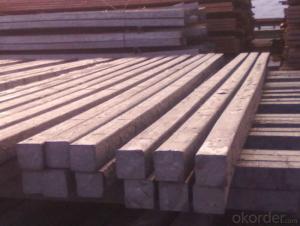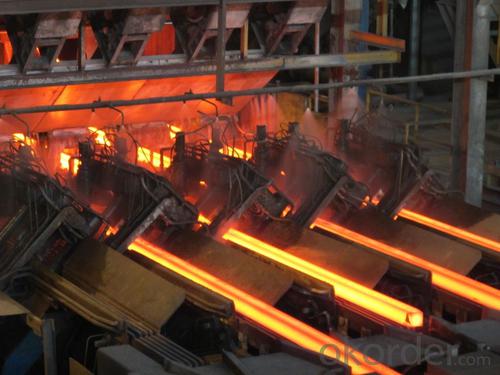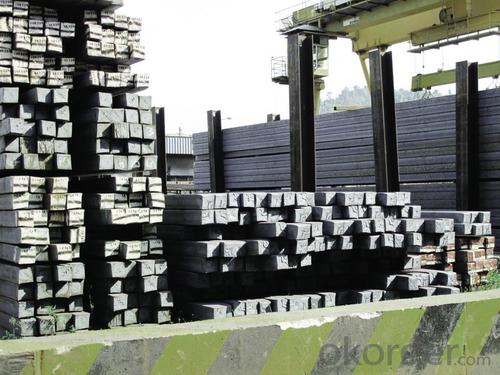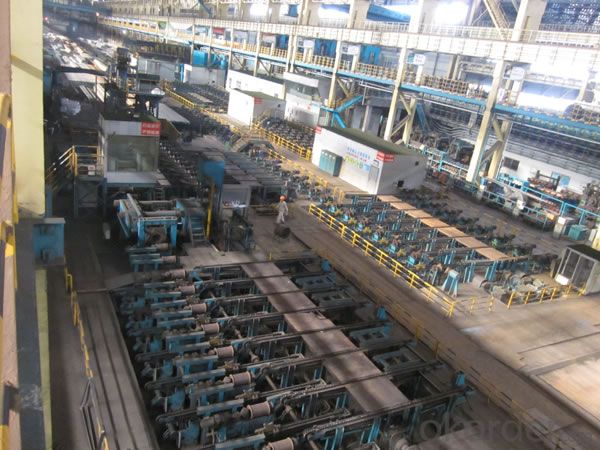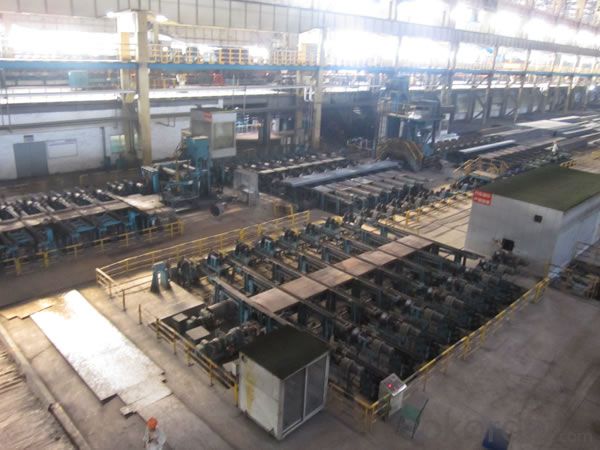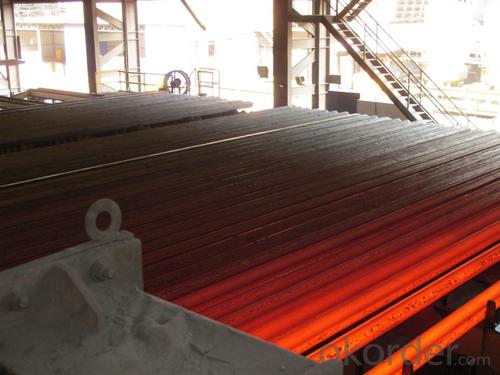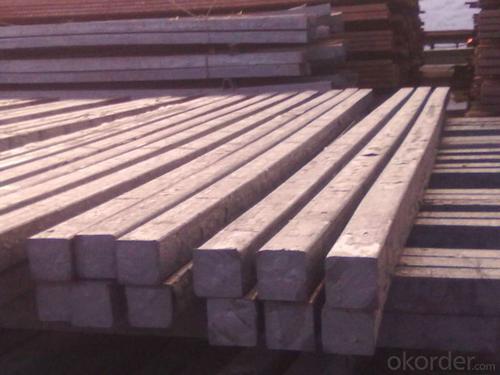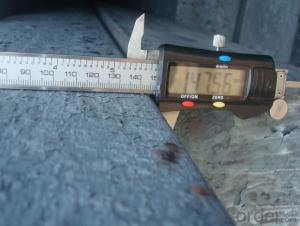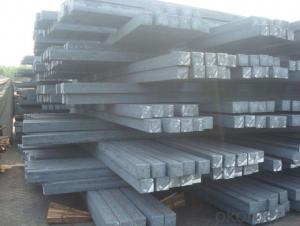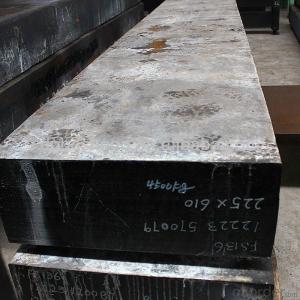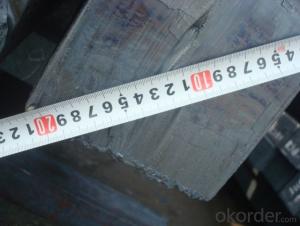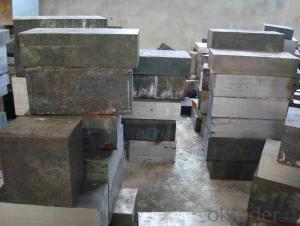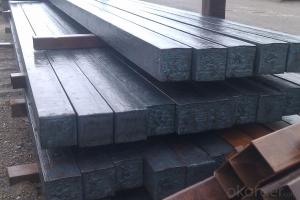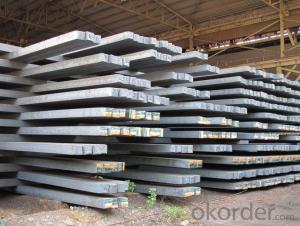Prime Q275 105mm Square Alloy Steel Billet
- Loading Port:
- Shanghai
- Payment Terms:
- TT OR LC
- Min Order Qty:
- 100 m.t.
- Supply Capability:
- 10000 m.t./month
OKorder Service Pledge
OKorder Financial Service
You Might Also Like
Structure of Prime Q275 105mm Square Alloy Steel Billet
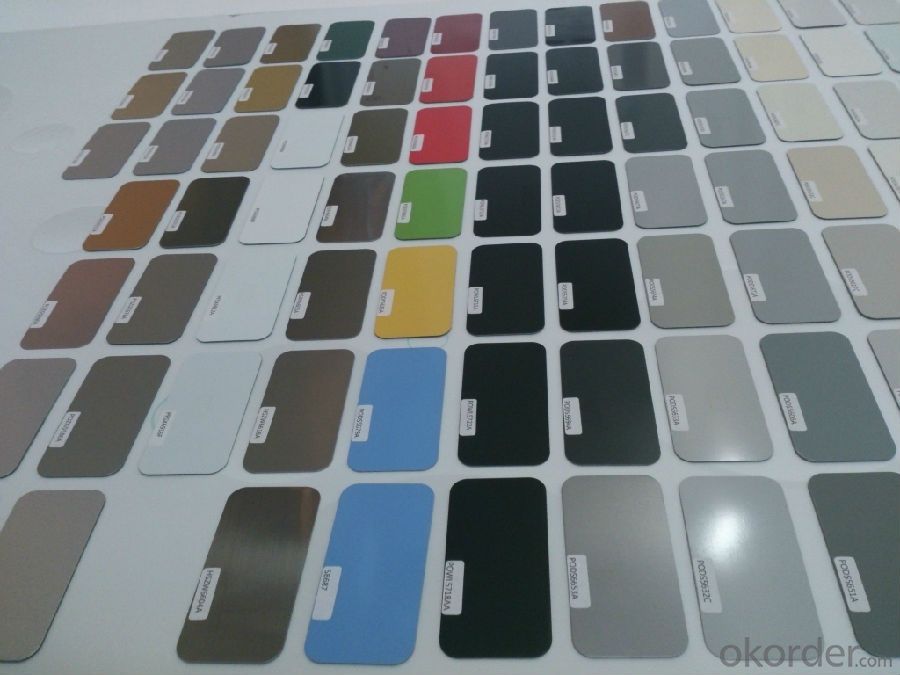
Description of Prime Q275 105mm Square Alloy Steel Billet
1. Prepainted steel coil is coated with organic layer, which provides higher anti-corrosion property and a longer lifespan than that of galvanized or galvalume steel sheets.
2. The base metals for prepainted steel coil consist of cold rolled, HDGI Steel, electro-galvanized and hot-dip alu-zinc coated steel. The finish coats of prepainted steel coil can be classified into groups as follows: polyester, silicon modified polyesters, polyvinylidene fluoride, high-durability polyester, etc.
3. The production process has evolved from one-coating-and-one-baking to double-coating-and-double-baking, and even three-coating-and-three-baking.
4. The color of the prepainted steel coil has a very wide selection, like orange, cream-colored, dark sky blue, sea blue, bright red, brick red, ivory white, porcelain blue, etc.
5. The prepainted steel coils can also be classified into groups by their surface textures, namely regular prepainted sheets, embossed sheets and printed sheets.
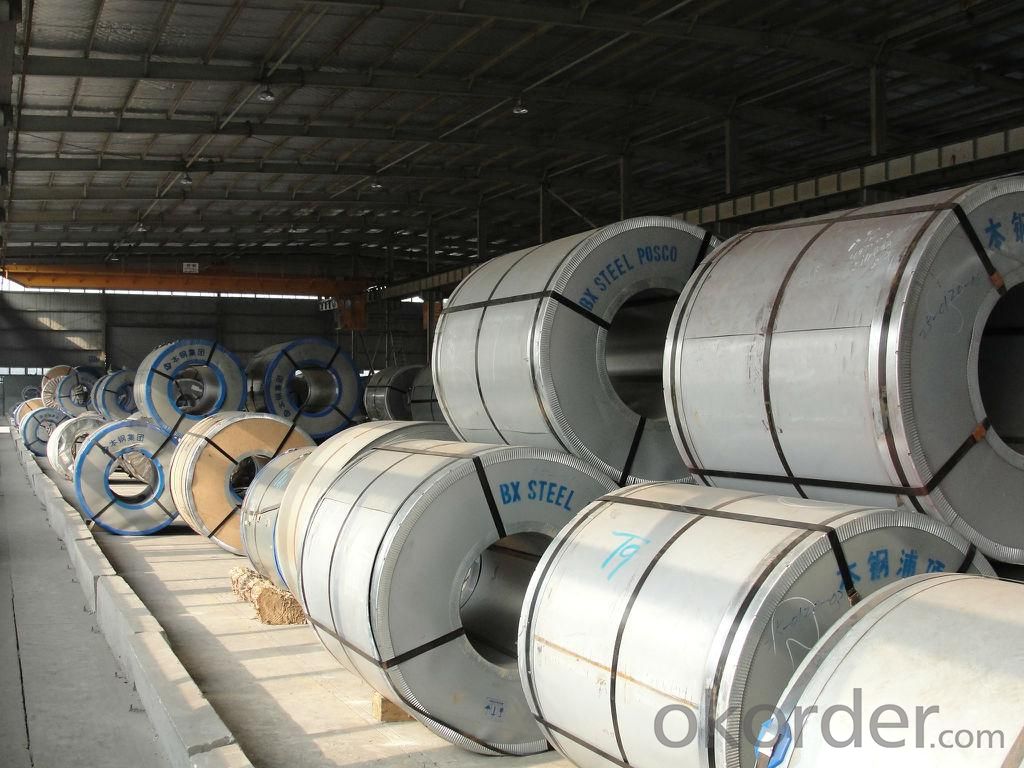
Main Feature of Prime Q275 105mm Square Alloy Steel Billet
Uncoated CR steel sheet
With the features of in line with the international highest standards in demension and shape, excellent surface finish and properties, the products are mainly used in home appliance and automobile industries.
Galvanized steel sheet(include HDG and EG)
With the features of good corrosion resistance, the products are mainly used in automobile, home appliance, electronics, building and machinery manufacture industries, etc.
Precoated steel sheet
With the features of enviromental protection and good processablility, long lasting surface durability, rich in colors, the products are maily used in building, home appliance and furniture industries, etc.
Applications of Prime Q275 105mm Square Alloy Steel Billet
A. Corrugated design makes it excellent waterproof performance
B. Materials as prepainted steel sheets, galvanized steel sheets, galvalume (Al-Zn coated sheets) are available to make corrugated sheet.
C.Those material are durable, anti-corrosion in bad weather for 20-30 years based on it's Zinc(Galvanized) coating or AZ (Galvalume) coating.
D. Different shape of the sheet make it suitable for any style of buildings.
E.Easy to install, no need special tools to fix the sheet.
F.Light weight due to high strength to weight ratio of steel. Light weight means easier handling lower shipping costs, easier installation
G. Different color is availbe base on the RAL Standard make your building more beautiful.
H. We will provide the best solutions if you don't have a exact idea of the specification you want for the steel sheet based on your weather conditions, engineering structure, construction budget and so on.
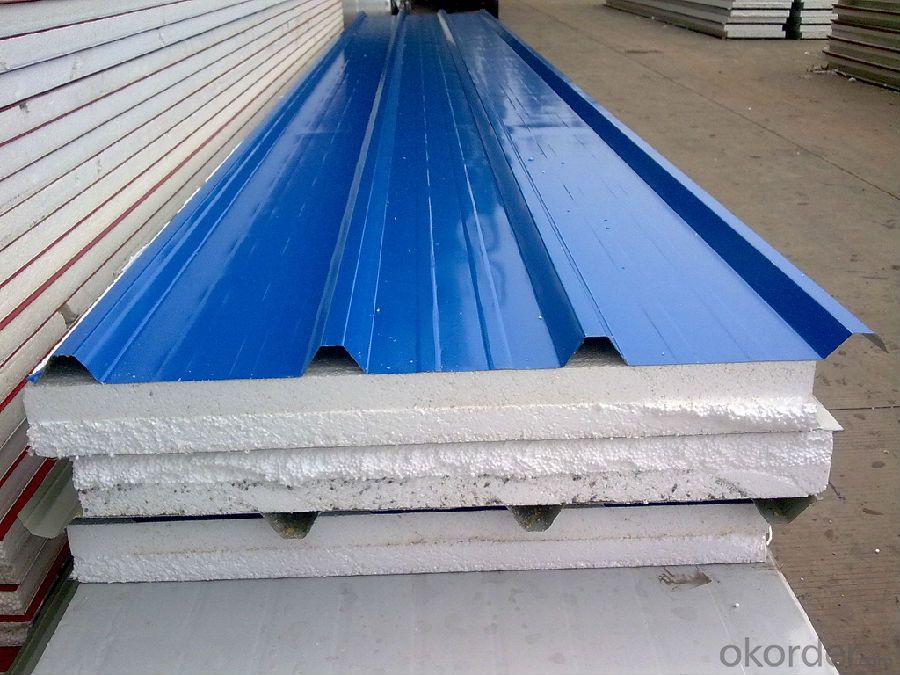
Specifications of Prime Q275 105mm Square Alloy Steel Billet
Product | Billet |
Material Grade | SGCC / SGCH / DX51D+AZ, etc |
Thickness | 0.6-3.0mm |
Width | 500-1500mm |
Tolerance | Thickness: +/-0.02mm , Width:+/-2mm |
Zinc-coating | Z30-150g/m2 |
Technique | Raw material: Hot rolled steel coil --> Cold rolled_>hot dipped galvalume |
Surface | Dried, Chromated, Unoiled |
Spangle | Regular spangle , small spangle, zero spangle |
ID | 508MM 610MM |
Coil weight | 1-25MT |
Export package | Cardboard inner sleeves, Waterproof paper, galvanized steel covered and steel strip packed |
FAQ of Prime Q275 105mm Square Alloy Steel Billet
We have organized several common questions for our clients,may help you sincerely:
1. How Can I Visit There?
Our company is located in Tianjin City, China, near Beijing. You can fly to Tianjin Airport Directly. All our clients, from home or aboard, are warmly welcome to visit us!
2. How Can I Get Some Sample?
We are honored to offer you sample.
3. Why choose CNBM?
Our delivery time about 15-20days for standard sizes, if you have other requirements like hardness, quanity and width ,it is about 20-40days. But don't worry we also try our best for the delivery time ,because time longer and our cost is higher.
- Q: What are the different quality standards for steel billets?
- There are several quality standards for steel billets, including ASTM (American Society for Testing and Materials), ISO (International Organization for Standardization), and EN (European Norm) standards. These standards define various parameters such as chemical composition, mechanical properties, and dimensional tolerances that steel billets must meet in order to ensure their quality and suitability for different applications.
- Q: How do steel billets contribute to the water treatment industry?
- The water treatment industry heavily relies on steel billets as they play a crucial role in manufacturing various equipment and structures used in water treatment processes. These billets are primarily used in constructing pipelines, tanks, and other infrastructure required for water treatment plants. One of the most vital applications of steel billets in the water treatment industry is for producing pipe fittings. These fittings connect different sections of pipelines, enabling the smooth transportation of water and other fluids within the treatment facility. Steel billets are commonly used for manufacturing these fittings due to their exceptional strength and durability, ensuring the longevity and reliability of the pipeline system. Furthermore, steel billets are also essential in constructing tanks and vessels used for storing and treating water. These tanks often endure harsh and corrosive conditions, making steel billets the preferred choice due to their corrosion resistance properties. Moreover, steel is a non-porous material, preventing water contamination within the tanks and ensuring the water remains clean and safe to consume. Additionally, steel billets are utilized in fabricating screens and filters used in the water treatment process. These screens and filters play a critical role in removing impurities, sediments, and other contaminants from the water. Steel billets provide the necessary strength and structural integrity to withstand the pressure and flow of water while effectively filtering out unwanted particles. Moreover, steel billets are also used in constructing various structures within water treatment plants, including walkways, platforms, and supports. These structures are vital for providing safe access to equipment and facilitating maintenance and repair activities. Steel billets are favored for such applications due to their high load-bearing capacity and resistance to environmental factors like moisture and chemicals. In conclusion, steel billets are indispensable in the water treatment industry. Their strength, durability, corrosion resistance, and versatility make them the material of choice for constructing pipelines, tanks, fittings, screens, and other structures necessary for efficient and effective water treatment processes.
- Q: How are the surface defects of steel billets repaired?
- Various methods can be employed to repair the surface defects found in steel billets, depending on the type and severity of the defect. Common surface defects include cracks, seams, laps, and scale. One approach to repairing surface defects involves grinding or milling. This entails the utilization of abrasive tools or machines to remove the outer layer of the billet. Grinding can effectively eliminate small defects such as scale, pits, or minor cracks. However, it may not be suitable for extensive or deep defects. For more severe defects like cracks or seams, welding is a common repair technique. The damaged areas are heated to a suitable temperature and then filled using welding electrodes or filler materials. Skilled welders are required to ensure proper fusion and strength of the repaired area. Mechanical methods, such as peening or hammering, can also be employed to repair surface defects. These techniques involve the use of specialized tools to reshape and smooth out the affected areas. Peening can effectively eliminate shallow cracks or surface irregularities. Another method used to identify and repair surface defects in steel billets is ultrasonic testing. This technique utilizes high-frequency sound waves to detect any hidden cracks or flaws. Once the defects are identified, appropriate repair methods can be implemented. It is important to emphasize that the repair process for surface defects in steel billets necessitates careful inspection and assessment to determine the most suitable method. Quality control measures must be implemented to ensure that the repaired billets meet the required standards for strength and integrity.
- Q: What are the applications of steel billets?
- Steel billets are primarily used as raw material in the production of various steel products such as bars, rods, wire, and seamless tubes. They are also used in the manufacturing of components for automotive, construction, and machinery industries. Additionally, steel billets can be further processed to produce forgings, which are used in heavy machinery and equipment.
- Q: How do steel billets contribute to the shipbuilding industry?
- Steel billets are a crucial component in the shipbuilding industry as they play a significant role in the construction of ships. These semi-finished products are essentially molten steel that has been solidified into a specific shape, usually a square or rectangular block. They are typically obtained through the process of continuous casting or ingot casting. One of the primary ways in which steel billets contribute to the shipbuilding industry is by providing the raw material for the fabrication of various ship components. These billets are further processed through rolling, forging, or extrusion to create different structural elements, such as plates, beams, angles, and channels. These components are then used in the construction of the hull, decks, bulkheads, and other structural parts of the ship. Steel billets also possess several advantageous properties that make them ideal for shipbuilding. Their high strength and durability ensure the structural integrity and longevity of the ship, enabling it to withstand the harsh marine environment and constant exposure to seawater. Moreover, steel billets have excellent weldability, which allows for efficient and reliable joining of various components during the ship assembly process. Furthermore, the use of steel billets in shipbuilding offers a cost-effective solution. Steel is readily available and abundant, making it a cost-efficient material choice for the construction of ships. Additionally, steel is highly recyclable, allowing for the reuse of steel billets and reducing environmental impact. In summary, steel billets are vital to the shipbuilding industry as they provide the raw material for the fabrication of various ship components. Their high strength, durability, weldability, and cost-effectiveness make them an ideal choice for constructing ships that can withstand the demanding marine environment. Ultimately, steel billets contribute to the safe and reliable operation of ships, supporting the growth and development of the shipbuilding industry.
- Q: How are steel billets used in the production of hydraulic components?
- Steel billets are an essential raw material used in the production of hydraulic components. These billets, which are semi-finished forms of steel, serve as the starting point for manufacturing various hydraulic parts. To begin with, steel billets are heated to high temperatures to make them malleable. This process is known as hot rolling, and it allows the billets to be easily shaped and formed into the desired hydraulic component. The hot billets are then passed through a series of rollers to achieve the desired size and shape, such as bars, rods, or tubes. Once the steel billets have been shaped, they undergo further machining processes to create specific hydraulic components. For example, they may be cut, drilled, or threaded to form pistons, cylinders, valve bodies, or other essential parts used in hydraulic systems. The use of steel billets in hydraulic component production offers several advantages. Firstly, steel is known for its high strength and durability, making it an ideal material for hydraulic applications where components are subjected to high pressure and heavy loads. Additionally, steel's excellent corrosion resistance ensures the longevity of hydraulic components, even in harsh operating conditions. Furthermore, steel billets allow for precise dimensional control during the manufacturing process. This ensures that the hydraulic components meet the required specifications and can seamlessly integrate into hydraulic systems without any compromise in performance. In conclusion, steel billets play a crucial role in the production of hydraulic components. By starting with these semi-finished forms of steel, manufacturers can create high-quality, durable, and precisely engineered parts that are vital for the efficient operation of hydraulic systems.
- Q: What are the main factors that determine the sustainability of steel billets production?
- Several key factors determine the sustainability of steel billets production. Firstly, the choice of raw material source plays a crucial role. Utilizing recycled scrap metal as the primary raw material reduces the need for new mining and extraction of iron ore, thus minimizing the environmental impact associated with resource extraction. Secondly, sustainability is influenced by energy consumption during the production process. Given that steel production is energy-intensive, the type of energy sources utilized greatly impacts sustainability. The adoption of renewable energy, such as solar or wind power, can significantly reduce the carbon footprint of steel billets production. Thirdly, the efficiency of production processes and technologies employed is vital for sustainability. Modern technologies, like electric arc furnaces, offer higher energy efficiency and emit fewer greenhouse gases compared to traditional blast furnaces. Additionally, implementing waste heat recovery systems and optimizing material usage further enhances the sustainability of steel billets production. Proper management of by-products and waste generated during production is another crucial factor. Ensuring appropriate handling, treatment, and disposal of by-products and waste materials, such as slag and dust, is essential to minimize environmental pollution and ensure sustainability. Furthermore, the overall sustainability of steel billets production is influenced by the adoption of responsible and ethical practices throughout the supply chain. This includes upholding labor rights, maintaining health and safety standards, and engaging with the community. Lastly, regulatory frameworks and government policies have a significant impact on sustainability. Stringent environmental regulations, support for clean technologies, and incentives for sustainable practices can encourage the industry to adopt more environmentally friendly production methods. In conclusion, the sustainability of steel billets production is determined by factors such as the raw material source, energy consumption, production processes, waste management, ethical practices, and regulatory frameworks. By addressing these factors, the steel industry can strive towards more sustainable and environmentally friendly production practices.
- Q: What are the main factors affecting the wear resistance of steel billets?
- The main factors affecting the wear resistance of steel billets include the composition of the steel, its hardness, the presence of impurities or inclusions, the heat treatment processes employed, and the surface finish of the billets.
- Q: What are the different shapes of steel billets?
- Steel billets can come in various shapes, including square, round, rectangular, and hexagonal.
- Q: What is the role of steel billets in the manufacturing of material handling equipment?
- Steel billets play a crucial role in the manufacturing of material handling equipment. These billets are essentially semi-finished steel products that are used as the raw material for various manufacturing processes. In the context of material handling equipment, steel billets are typically used in the fabrication of heavy-duty components such as frames, beams, and brackets. These components need to possess high strength, durability, and resistance to wear and tear in order to withstand the demanding conditions that material handling equipment often operates in. The use of steel billets allows manufacturers to create these components with the necessary mechanical properties. The billets are first heated and then shaped through processes like rolling, forging, or extrusion to produce the desired shape and dimensions. This shaping process ensures that the components have the required strength and structural integrity to handle the weight and stress associated with material handling tasks. Furthermore, steel billets offer excellent weldability, which is crucial in the fabrication of material handling equipment. The ability to weld the components together ensures that the equipment can be assembled securely and efficiently. This is especially important for equipment such as cranes, forklifts, and conveyors, where the safe and efficient movement of heavy loads is paramount. Moreover, steel billets provide a cost-effective solution for manufacturing material handling equipment. Steel is widely available, relatively affordable, and can be recycled, making it a sustainable choice. The versatility of steel billets also allows manufacturers to create components of various shapes and sizes, enabling customization to meet specific requirements. Overall, the role of steel billets in the manufacturing of material handling equipment is crucial. They provide the raw material necessary to create strong, durable, and reliable components that can withstand the demanding conditions of material handling tasks. With their excellent mechanical properties and weldability, steel billets contribute to the safe and efficient operation of material handling equipment.
Send your message to us
Prime Q275 105mm Square Alloy Steel Billet
- Loading Port:
- Shanghai
- Payment Terms:
- TT OR LC
- Min Order Qty:
- 100 m.t.
- Supply Capability:
- 10000 m.t./month
OKorder Service Pledge
OKorder Financial Service
Similar products
Hot products
Hot Searches
Related keywords
